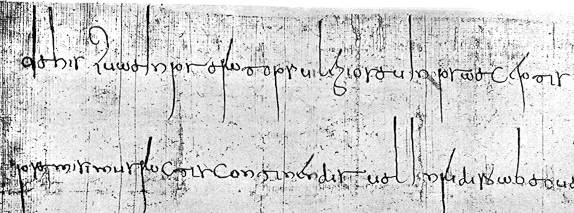Script Type : minuscule
Alternative name : littera Romana
Date : up until around the 11th century
Location : the papal curia in Rome
Function : document hand or diploma hand, specifically for use in papal bulls























Distinctive letters : There are many unusual letter forms in this script and many letters that resemble each other. Ascenders and descenders are very tall compared to the general letter sizes, which also makes it tricky.
The letter a looks rather like a w, while e is a simple loop that could be mistaken for an o. The letter f has a strange broken backed appearance while g is completely open in a zigzag form. While i looks relatively normal, it is extended into a tall form when it occurs at the beginning of words. The letter q is very unusual, rather like the numeral 2. The letters r and s are practically identical. The letter t is highly variable, but is short and sometimes has a loop at the bottom.
The letter K only appears as a capital in the proper name Karoli, and there are no examples visible of j, w, y or z.
Add to this a number of ligatures which change the appearance of letters and a cramped word spacing, and you have something which is very difficult to read. However, there are no abbreviations.
As this script was used only in the papal curia and only during the early middle ages, I doubt there is a single document out there in this script that has not been transcribed and published already. However, it is another link in the chain of the history of writing. The segment shown above is a non-continuous scrap, but pass the cursor across it slowly and see if the words that appear are anything like what you expect. Needless to say, the transcription comes directly from Steffens. There is no paleography exercise for this sample until I get my strength up.
If you are looking at this page without frames, there is more information about medieval writing to be found by going to the home page (framed) or the site map (no frames).